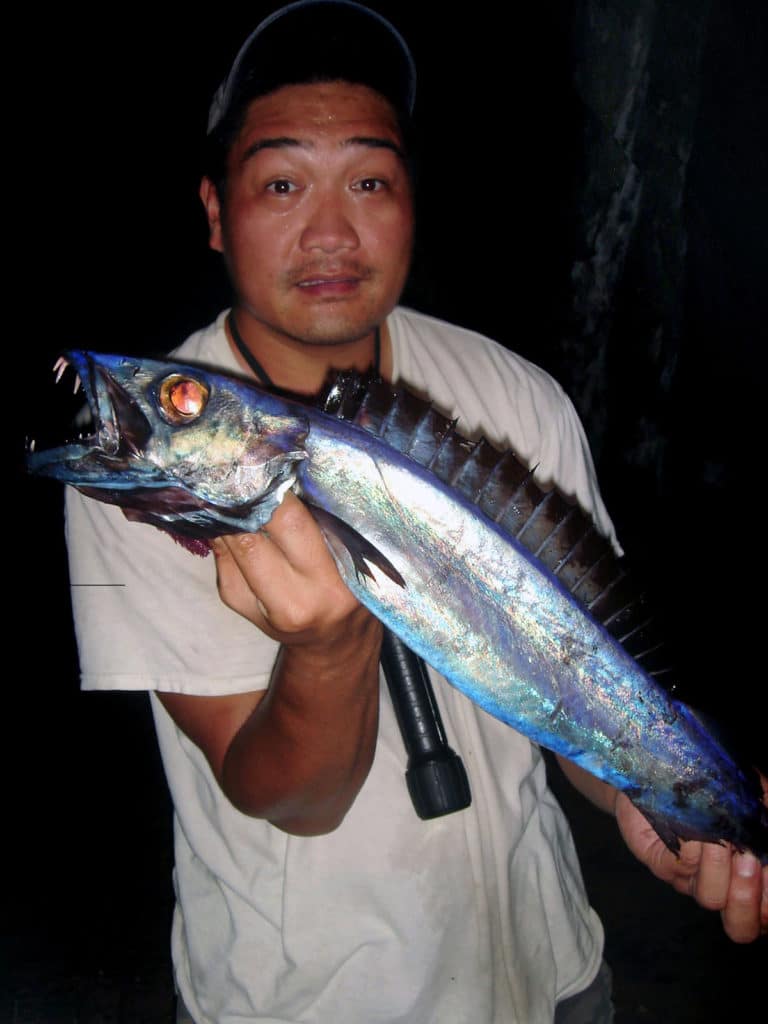
While fishing along the cliffs on the Big Island of Hawaii, Avery Berido of Kea’au caught what, he says, anglers locally call a “mongoose fish.” Berido fished a glow strip with a slow retrieve during a dark moon phase. “These are generally uncommon here, but occasionally they’ll swarm your baits at night when you’re fishing from shore near deep dropoffs.” Berido guessed the fish to be some sort of snake mackerel or Roudi escolar, and turned to our Fish Facts experts for confirmation, as well as for information on the species’ edibility.
“Avery, you’re right on both counts,” says Ben Diggles, one of Australia’s leading fisheries scientists. “That fish is some type of snake mackerel, and I agree that it’s a Roudi escolar (Promethichthys prometheus).” Diggles confirms that the Roudi is one of the more widespread species in the snake mackerel family (Gempylidae), found in tropical and warm temperate regions of all oceans worldwide, most commonly around oceanic islands or seamounts at depths between 240 and 2,400 feet.
“They do migrate toward the surface at night to feed on fish, squids and crustaceans, so catching them from the shore is feasible when conditions are right.” Diggles says. “This particular species grows to around 40 inches long, so yours still had some growing to do. Like other escolars their flesh is very oily containing a type of wax ester which can have a significant laxative effect for some people, as — if you ate much of it — I guess you may have already found out.”









